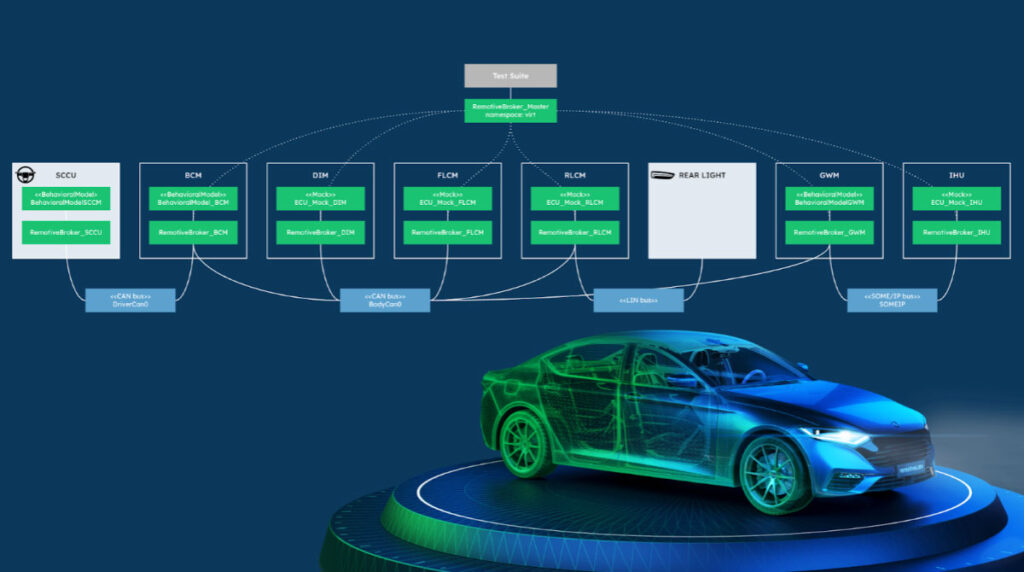Automotive companies have long been pioneers in simulating hardware — they even crash-test vehicle hardware virtually, long before it’s available. However, software developers haven’t had the same opportunity to interactively experience and test their software due to locked-in toolchains and processes focused on static specifications rather than running code. That changes now! “RemotiveTopology represents a paradigm shift for automotive software development,” says Per Sigurdson, CEO of RemotiveLabs. “We’re enabling developers to break free from traditional constraints, offering a software-first approach that allows teams to collaborate, innovate, and run tests in ways that were previously impossible. By empowering engineers to ‘test drive’ their applications in virtual environments, we’re not just enhancing efficiency — we’re paving the way for the future of Software Defined Vehicles”.
RemotiveTopology, launched in September 2024, is already used by several OEMs to simulate vehicle platforms and allows developers to run test cases dependent on network nodes not yet available. The flexible framework enables developers to set up the relevant test topology, integrating virtual ECUs and hardware while running in continuous integration pipelines.
RemotiveLabs demo at CES2025 shows how software engineers can start testing their platform earlier – from mocks to behavioral models, simulation, and hardware.
Aleksandar Filipov, CTO of RemotiveLabs, adds: “We have this big idea to break silos and we are showcasing how developers can test-run actual vehicle software in a virtual environment. We’re pushing boundaries by allowing developers to run multi-ECU simulations on a laptop, bringing the automotive industry closer to a truly software-first development process. The demo includes participants with varying software maturity in a hybrid setup including hardware ECUs mixed with pure SW components”.
One of the major challenges for automotive development is teams needing to wait for other teams to be able to test their code. With RemotiveLabs tooling, teams can collaboratively mature the vehicle software platform on a system level in a software-first environment and then move the fully tested software to the Physical Twin (=the vehicle hardware platform). This approach offers a major shift in how software is built in automotive, closing the gap between physical and digital, and thereby equipping vehicle software engineers with the tools they need to succeed with Software Defined Vehicles.
SOURCE: RemotiveLabs

